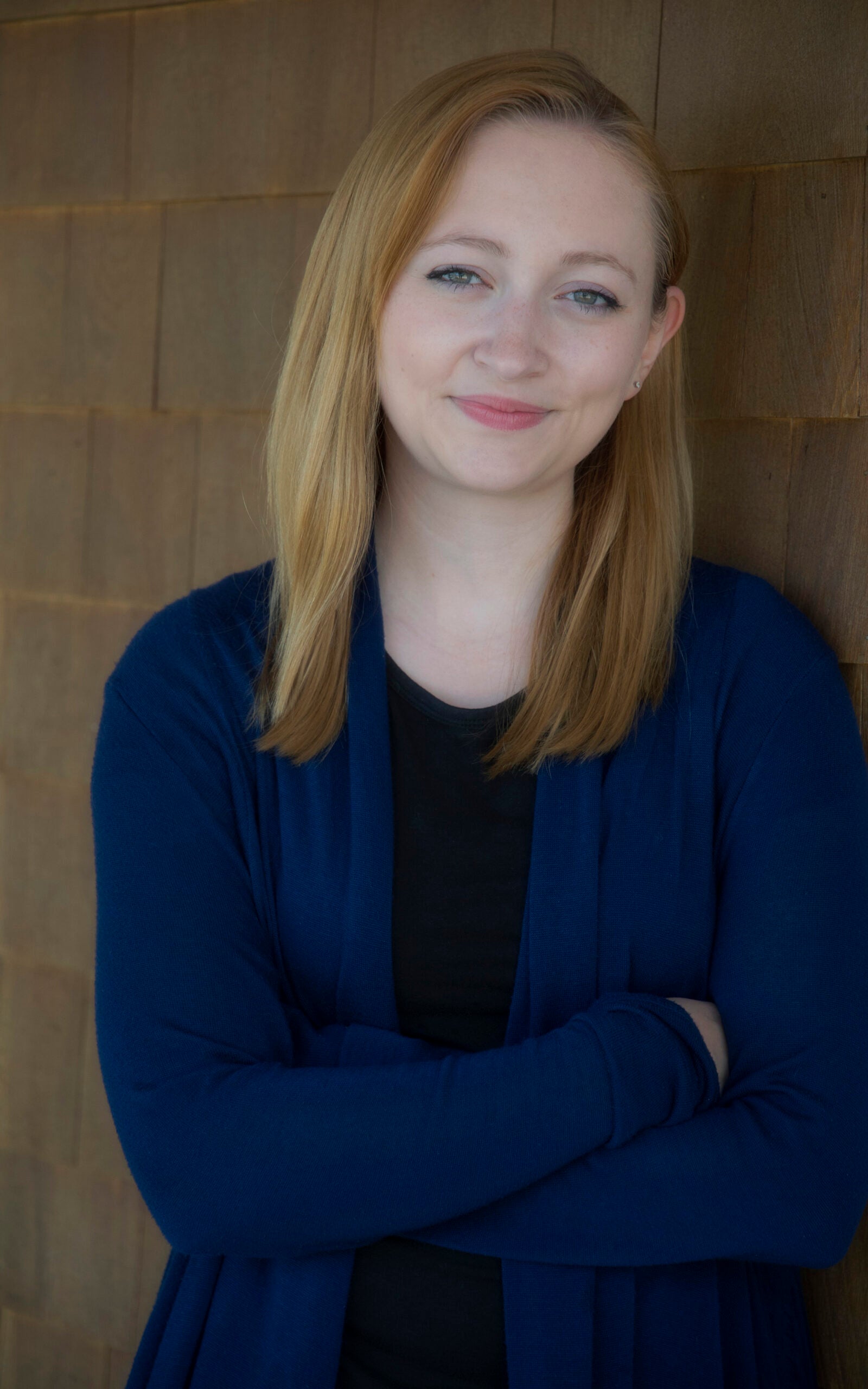KINGSTON, R.I. – May 11, 2018 – Exeter resident Rachel Bellisle took advantage of every opportunity that came her way during her four years at the University of Rhode Island, from playing oboe in the Symphonic Wind Ensemble to working in laboratories and participating in internships. Now she is pondering a career tied to the cosmos.
As she looks toward graduation on May 20, she is also looking forward to enrolling at the prestigious and highly-competitive Health Sciences and Technology graduate program of Harvard University and the Massachusetts Institute of Technology, where she will study the emerging disciplines of bioastronautics and medical engineering.
“I loved my time at URI,” said Bellisle, a biomedical engineering major with a minor in business. “It opened up a lot of opportunities for me, and I’m incredibly grateful for those opportunities.”
Bellisle pursued a degree in engineering in part because her father is an engineer. “He’s a civil engineer, but I chose biomedical because I’m interested in the medical field in combination with engineering. I also wasn’t sure I could ever be a doctor because I’m not good around blood,” she said.
It didn’t take long after starting her college career before Bellisle delved into biomedical engineering research. As a sophomore, she worked in Professor Walt Besio’s Neuro Rehabilitation Laboratory studying an electrode Besio invented to better understand brain signals.
“We were seeing a slow wave frequency in the electrode signals and he didn’t know where it came from,” Bellisle said. “I did some experiments to see if it came from microsaccades, the tiny movements in our eyes that happen when we fixate on something.” The results of her research were presented at the International Engineering in Medicine and Biology conference in South Korea in 2017.
That summer she enjoyed her first internship experience working in the production, quality and logistics department at the Naval Undersea Warfare Center in Newport. She followed that up with an internship last summer at the National Institutes of Health in Bethesda, Md., where she worked at the world’s largest research hospital. She analyzed the results of tests of an exoskeleton developed to help children with cerebral palsy improve their walking ability.
“Some kids with cerebral palsy have a gait disorder where their knees are more flexed than usual, so the exoskeleton helps them extend their knees to promote a more efficient walking pattern,” Bellisle said. “It was in the early stages of testing, but eventually they hope to use it as a rehabilitation device. The purpose of the device is to train the user to not need the device.”
The experience of living with 16 other interns from around the country and working in this prestigious facility was inspiring to her.
“It was a game changer for me,” she said. “I went into it not knowing quite what I wanted to do after graduation, and throughout the course of the internship I discovered exactly what I wanted to do and found I was ready to go to grad school.”
One of Bellisle’s most treasured experiences at URI was her involvement in the URI chapter of the Society of Women Engineers, which provided professional development opportunities and allowed her to attend national conferences.
“I really enjoyed being involved in the URI engineering community,” she said. “Without a doubt I wouldn’t have been as successful without my involvement in those groups.”
Bellisle earned numerous awards for her academic excellence during her four years at URI, including membership in the engineering honor society Tau Beta Pi, which led to a national fellowship from the society. The most notable award, however, was one she didn’t even win. She earned honorable mention in the Goldwater Scholarship program, the most prestigious undergraduate scholarship for students studying math, science and engineering.
“Even though I didn’t win, the process of applying and interviewing for it really helped me,” she said. “If I hadn’t applied, I wouldn’t have been as prepared to apply for the NIH internship and other programs. It really made me think about what I wanted to do with my life.”
One of those other programs she applied for was the Harvard-MIT graduate program in Health Sciences and Technology, one of the oldest and largest biomedical engineering and physician-scientist training programs in the country. She was accepted as a doctoral student in the program’s Medical Engineering and Medical Physics program, one of just 25 students accepted each year.
“The point of the program is to choose a standard engineering discipline and apply it to the medical field,” Bellisle said. “We also get to take pre-clinical courses with medical students to get the perspective of someone in the clinical field and understand the implications of our work.”
The program will allow her to pursue her interests in neuro-engineering, biomechanics and assistive devices, like the exoskeleton she studied in Maryland. She was also one of just two students accepted into the program’s Bioastronautics Training Program, where she will study the effects of space flight on the human body.
“I’m still not positive that bioastronautics is the direction I’m going to go with my career, but it’s something I want to explore,” she said. “It’s a very specific field, but the applications are amazing. It’s an area that I’ve always been interested in.”
Her entire five- to seven-year graduate program has been funded by a fellowship from Draper Laboratories.
Where does Bellisle see herself in the future? She’s not certain yet, but probably working in the biomedical industry or at a start-up company.
“Through the fellowship with Draper, I might end up working there or at another research institute,” she said. “I definitely want to stick with doing research, and I might end up in academia, because I like teaching. But things could change a lot between now and then.”

